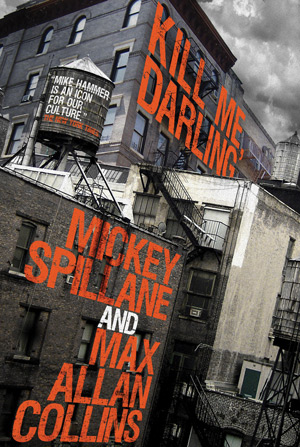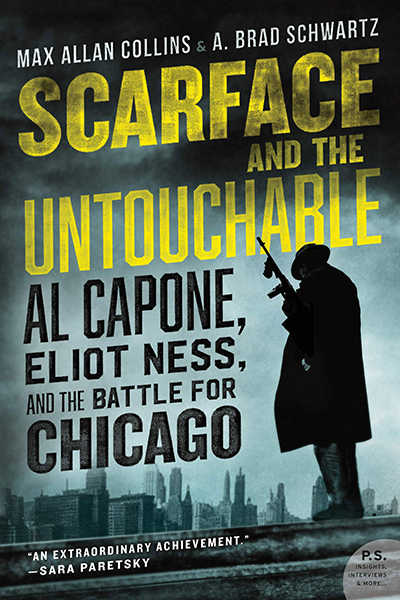I have been wanting to share this with you for ages, but couldn’t figure out how to do so – all I have is a VHS tape of it. What is it? Seduction of the Innocents’ video of “The Truth Hurts” from our CD, The Golden Age. I love this video, and how well it displays Miguel Ferrer’s charisma, and Bill Mumy’s acting. Also there for the video shoot, and perhaps glimpsed here, was Brandon Lee, who was (believe it or not) a kind of camp follower of the band – a wonderful guy.
Time passes and things happen, and along the way we meet – if we are very lucky and I have been – some remarkable people, and that includes those mentioned above, but also my bandmates Steve Leialoha and Chris Christensen. Chris in 1990 had not joined the band yet, but he released “The Golden Age” on CD on his Beat Brothers label (also the label that released the various Crusin’ CDs).
Thirty years ago? Really?
Also thirty years ago was the release of the Dick Tracy film, and it’s getting some Thirtieth Anniversary play right now.
So here is a long excerpt from an article I wrote for Lee Goldberg’s Tied In – The Business, History and Craft of Media Tie-In Writing. It is the behind-the-scenes amusing and horrorifying story of my writing of the movie tie-in novelization of Dick Tracy.
I wanted to write the Dick Tracy tie-in novel because I‘d been the writer of the syndicated strip since 1977, plus I was a mystery novelist. Landing the Dick Tracy strip was my first really big career break. I got the job after trying out for it, writing a sample continuity. I got the opportunity to try out chiefly because of some mystery novels I‘d written as a kid that had a strong comics element (Bait Money and Blood Money, both 1973).
My re-boot of the strip got a lot of positive attention, and I loved the job, having been a stone Dick Tracy fanatic since childhood. Before getting the strip, I had even developed a friendship with creator Chester Gould – a rarity, because he was very private – although Chet played no role in my landing this plum assignment.
Some time in the ‘80s, I was shown a potential screenplay for Dick Tracy, shared with me by my Chicago Tribune Syndicate editor. I thought it was lousy, and told him so, and he agreed. I figured that was the end of it.
But the Dick Tracy film was a project that wouldn‘t die – Clint Eastwood was going to be the square-jawed dick for a while, which was exciting, and then finally Warren Beatty got obsessed with it, and it became a Disney project and a very big deal. I offered to do the novel version and, thanks to my credentials as the writer of the strip, got the gig. I was thrilled.
Then they sent me the screenplay – it was virtually the same lousy one I‘d read seven or eight years before! I was
shocked and dismayed. Lots of the classic characters, villains and good guys alike, some good situations…but no story. Not really.
I asked my agent what to do about it, wondering what kind of novel I could fashion from such weak material, and he said, “Just do whatever you want with it. Nobody‘s going to read it at Disney – this is just small change to them.” Did I mention that my usually very savvy agent had never sold a tie-in before? And that this was the worst advice he ever gave me?
So I wrote a novel very loosely based on the screenplay. I added more characters from the strip, provided a story, even replaced what seemed to me to be unimaginative death traps with my own better ones. It was a terrific little novel, designed by and for a Dick Tracy fan like me.
I sent it in, went on about my business, and several months later my wife Barb and I were preparing to go on a research trip to Nassau (for my Nate Heller novel Carnal Hours) when my agent called with bad news. The Disney people hadn‘t even made it through my book – got maybe a third of the way – before saying a faithful-to-the-screenplay page one rewrite was needed.
In seven days.
Dick Tracy is legendarily a movie that Warren Beatty micro-managed. Every tie-in aspect was overseen by Beatty and his top people. The novel I‘d written was inappropriate for any film. To have taken these liberties on Dick Tracy was a blundering piece of farcical arrogance on my part that makes Fawlty Towers look like a documentary.
So with a 1989-era laptop (think about it), I went to Nassau and spent 70% of my time in the hotel room salvaging what little I could from my first version. Maybe 25% of it was workable. Actually, some of my non-screenplay stuff made it in, because it didn‘t contradict anything (Vitamin Flintheart is in my novel, for instance, but not in the film, not even deleted scenes).
Barb and I were in Nassau four or five days, and I came home and wrote the rest of it, just blazing. What I came up with was pretty good. I was as happy with it as possible, considering the weak screenplay that was my source. But that, as they say, was just the beginning….
I spent many, many hours on the phone with the producer of the film, Barry Osborne (later involved in The Lord Of The Rings trilogy), a gracious, intelligent man, and way too far up the food chain to be giving a lowly tie-in writer such instructions as, “The chair on page 223? It‘s green not red,” and, “You have 88 Keyes standing up from the piano too soon on page 187.” Most of the changes I was asked to make had to do with such surface things, and many substantial changes I had made in character motivation and dialogue were overlooked.
This was perhaps the most instructive thing I learned from the experience – if you follow the screenplay out the door, and do the surface of it accurately, you can slip in all kinds of substance where characterization and fleshing out of scenes are concerned.
Osborne actually liked the novel a lot, and he told me on several occasions that I had solved plot problems for them, which they had fixed by way of dialogue looping – and indeed the film has five or six lines I wrote.
Also, he asked me about a scene involving Tracy‘s girl friend Tess and her mother, where Mrs. Trueheart says a lot of negative stuff about Dick, how she is delighted that Tess and Dick have broken up and how selfish the detective is, etc. I had softened this scene, making Tess‘s mother much more positive about her potential son-in-law. The producer asked me why I‘d done that.
“Because,” I said, “Tracy joined the police force to avenge the death of Mrs. Trueheart‘s husband – Tess‘s father, who ran a deli and got shot by robbers. Mrs. Trueheart adores Dick Tracy. Every Dick Tracy fan knows that.”
And they re-shot the scene along my lines.
So I take a certain pride in knowing that Dick Tracy is a film in part based upon its own novelization. The final battle, however, reached new heights of absurdity, and involved phone calls with high-level folks at Disney. How high level? How about Jeffrey Katzenberg? The “surprise” ending of Dick Tracy is that the mysterious masked bad guy called the Blank is actually Breathless Mahoney. Sorry to ruin it for you, but, yes, Madonna did it.
This surprise seemed painfully obvious to me, the kind of shocker you can damn near figure out in the opening credits. But Beatty, Disney and all associated were convinced they had a surprise on the level of The Sixth Sense (I figured that out, too, about five minutes in). So I was instructed to remove it from the novel.
Wait a minute, you‘re saying. Remove what? The identity of the masked bad guy. The solution to the mystery. You know…who the killer is.
This surprise ending, the Disney folks told me, had to be guarded like the Coca Cola recipe or the unretouched Zapruder film. And when I pointed out that Dick Tracy was a mystery story, and that leaving the ending off a mystery story just might disappoint a few readers, this seemed of no particular import.
I did half a dozen rewrites of the ending, sneaking in hints of the Blank‘s identity, such as, “Why, look who it is under the mask…” said Tess, breathlessly. No sale. About a page was cut from the book.
I won only one small concession – that any printings after the film came out would include the full ending. Only one small print run represents the complete novel (the sixth, distributed to school book clubs).
There can be no doubt that I hold a singular honor among mystery writers – I wrote a bestselling whodunit… without revealing whodunit.
Perhaps by way of apology, the Disney people flew my wife, son, mother and father and me to the film‘s premiere at Disneyworld in Florida. They treated us great. Everybody attached to the movie treated us great, including Warren Beatty. We did a big press get-together with many of the stars. I was doing a Mumbles continuity in the Dick Tracy strip at the time, and Dustin Hoffman (who played Mumbles in the film) read me that day‘s strip from a local paper, doing Mumbles’ dialogue in character. Doesn‘t get much better than that.
Two postscripts: in our Disneyworld hotel, a coloring book on sale – an item that (it turned out) had been available to the public for several weeks – included the Breathless-is-the-Blank ending. As we say in the funnies, “Sigh….”
Also, the wonderful actress Estelle Parsons (who played Mrs. Truehart in the film) wandered into a bookstore at Disneyworld, where I was signing copies of my open-ended novel. We spoke, and she was very sweet, and I said to her, “You had to re-shoot your big scene, didn‘t you?”
She looked at me, amazed. “How did you know that?”
And I told her.
* * *
Here is a look at the Thirtieth Anniversary of Dick Tracy in which my role is dealt with somewhat.
And here, as well, my part touched on somewhat more extensively. (If this link requires you to subscribe to the Telegraph, note that a free subscription is available.)
As for the Seduction of the Innocent CD, “The Golden Age,” it’s possible Chris has a few copies left; write him at Jchris3227@aol.com. I have a few cassette copies and also Seduction’s live CD. You know where to find me.
M.A.C.









